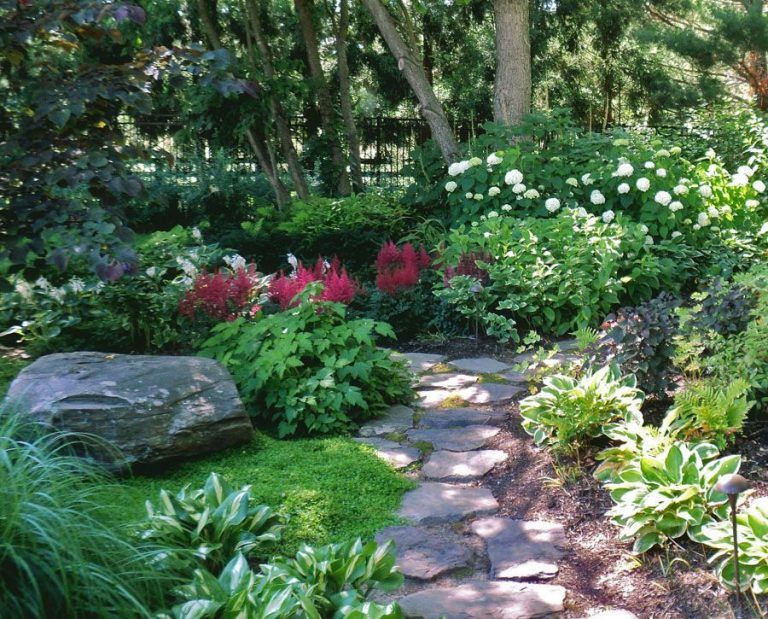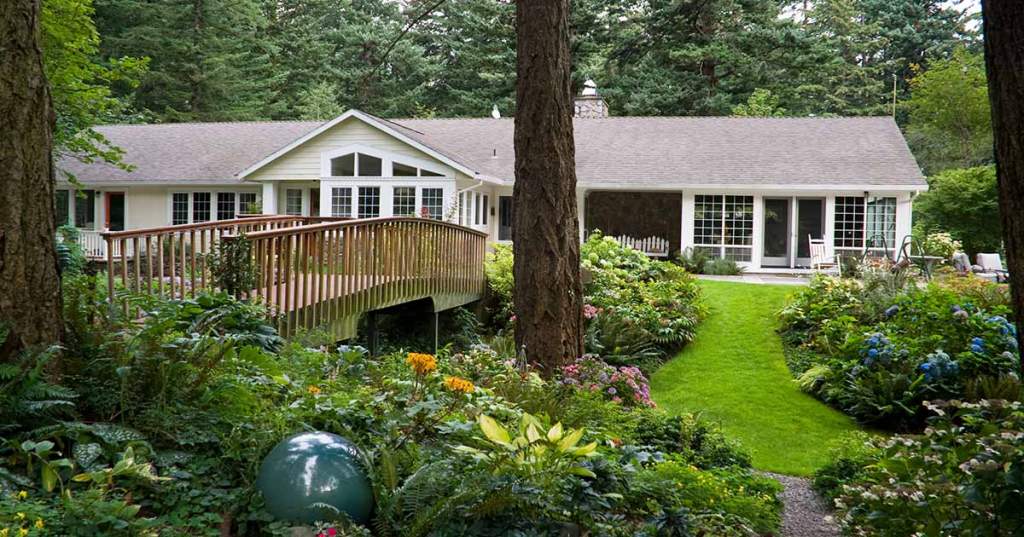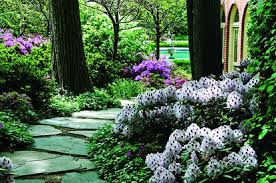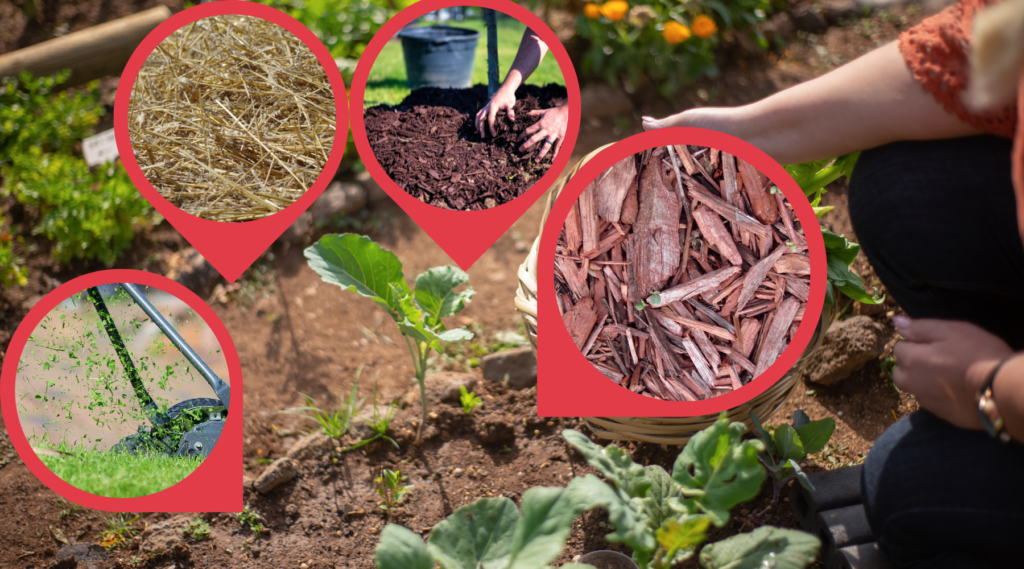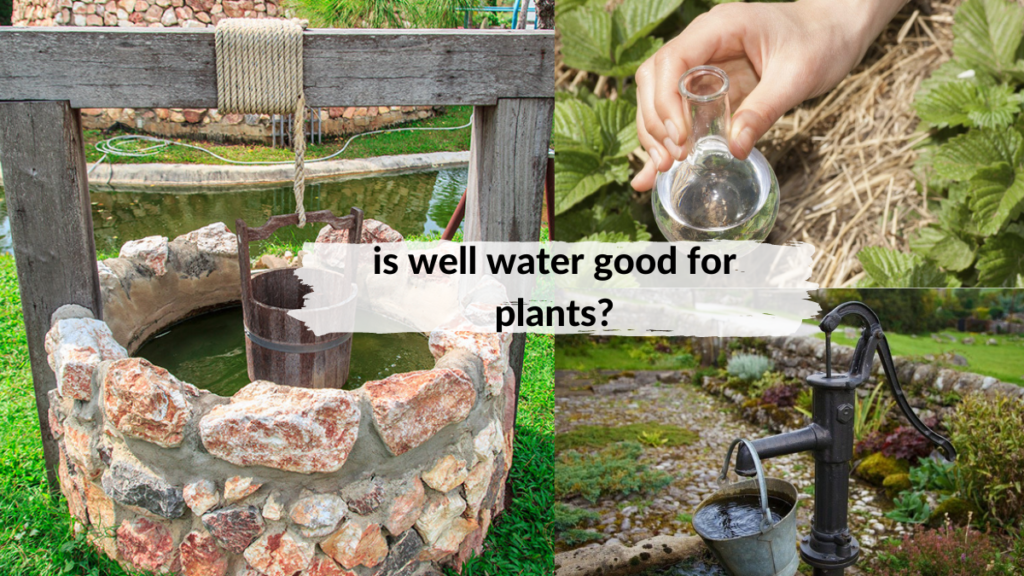Healthy shade plants can turn any garden into soothing sanctuaries. This is an interesting sight, especially during warm summer days.
Shade gardens tend to transform any garden into something cool and refreshing to look at. However, shade gardening requires extra planning. The limited sun may be challenging in growing certain plants, but it can offer fresh opportunities for improving the overall look of your shade garden.
what you need to learn before planning to create shade gardens
If you are planning to create a shade garden, then you must learn that behind a beautiful shade garden is understanding shade, learning shade tolerant plants, and caring for these shade plants.
understanding the degrees of shade
All plants even shade tolerant plants have different light requirements for them to thrive. However, the needed amounts of sunlight by shade plants also vary.
You need to read the labels or catalogues of the plants you choose to know which ones need “partial shade,” “dense shade,” and those that require “full shade.” Learning the shade conditions that every plant needs will help you understand which plants go to different areas of your shady garden. This will also help you determine the various levels of shade that your outdoor space holds.
partial or medium shade
This is the condition where your garden has half of its daytime hours in the shade. Your garden roughly has 4 to 6 hours of sun and the same period of shade every day. When it comes to shade plants that require this degree of shade, they must get at least 4 hours of shade.
full shade
These are areas that only get about 2 to 4 hours of direct sunlight. For those with shady lawns, this condition can be called a dense shade. With other plants that require this condition, this does not mean that they do not need full sun. It only means that these plants can live with indirect sunlight.
Other terms used for this are “dappled shade,” “light shade,” or “filtered shade.” These are conditions when areas of shady gardens are along the edges or where there is lush foliage that filters the sun and hits the ground.
understanding your garden’s shade patterns before choosing your shade plants and looking for shade garden ideas
Among the important shade garden tips that you should learn before choosing your shade plants and getting any shade garden ideas is to understand the shade patterns in your garden. You have to invest time in understanding the seasonal and daily shade patterns.
You should check all shady spots in your yard because not all areas that are shaded in the morning and night will remain shaded in the middle of the day. Spring gardens that are lightly shaded can turn densely shaded once trees start unfurling their leaves.
Once you start understanding what your garden has to offer, you can start working from there or do some work to make your garden more suitable for shade gardening. Among the things that you can do is thin any trees or shrubs to help increase the light and reduce the shady area in your garden. You can also add shade-producing structures like trellises or arbours to limit sun exposure and increase the shade amounts.
shade plants you can pick for your shade garden
When you are ready to choose plants for your shade garden, you have to pick plants that can flourish in the growing areas. The plants should be suitable for the shade conditions in your garden. You can combine different plants that can thrive in different degrees of shade, so you have to consider those differences before choosing.
You have to consider your geography when it comes to planting. A few plants may prefer full shade under the hot southern suns and will need more exposure when placed in northern gardens where there is less sun. While others may need less exposure and will continuously shine.
Spend time matching the shade tolerances of your plants and shade preferences for them to thrive. Tender perennials, annuals, and flowering plants turn into the most vibrant colours in the shade.
Perennial hostas fade in the sun and turn into beautiful colourful leaves with depths of blues, silvers, creams, and greens when shaded. Fern fronds on the other hand can reach their full feathery look when protected from the harsh and drying rays of the sun.
plant choices to incorporate in your shade garden ideas
Most of the right plants to include in your shade garden design are native plants that can grow beneath woodland trees. You can add flowering shrubs and small trees like redbuds and dogwoods, white flowers, and pink flowers easily light woodlands every spring.
Native low-growing ground covers like bunchberries provide flowers and at the same time ornamental fruits. Hydrangeas and azaleas require part shade which needs a balance of sunlight to produce beautiful foliage and blooms that gardeners love.
Though different plants can live and thrive in shade gardens, there are many mature trees, fruit-bearing and flowering plants that may require full sun. Plants in a vegetable garden might require full sun, so you need to be careful in choosing the vegetables that you want to grow in your shade garden.
Take time in exploring and focusing on additional qualities of plants that you would be adding to your garden. Additional qualities include foliage colour, shape, height, and texture. You can incorporate depth and diversity in your shade garden just like how sunny gardens are built around berries and blooms.
taking care of shade garden plants
By nature, shade gardens provide shelter to plants and keep moist soil. This is why the maintenance requirements for these are different from sunny gardens.
Because of the dappled light from the sun and the shade spot offered by the tree canopy from deciduous trees, these areas conserve moisture and dry out more slowly. This means that these gardens require less watering.
Though water is needed to keep the soil moist and plants hydrated, the soil should not be overly wet. You should also avoid overhead watering. Make a schedule to water early morning and water the soil directly. This will be enough to prevent the leaves from staying wet and preventing them from being vulnerable to fungal disease.
Shade tolerant plants have their specific nutrient and soil needs and you have to group them accordingly to enhance their beauty and health. This will also help reduce the maintenance time needed for your garden.
a major downside when you create shade gardens
One major downside of creating a shade garden is that the plants are highly susceptible to insects like spider mites, mealybugs, and whiteflies. Some of the visible damages that these insects do are white cottony spots on leaves and stems and holes in the leaves. You have to invest in insect killers that you can spray or apply where the insects are found or on the infected areas.
planning your shade garden
There are various things that you can consider doing when planning your shade garden design. Some of the tips that you can do to make your shade garden beautiful and healthy.
colourful options for shade gardens
Most of the shade gardens are indeed foliage-heavy, but it does not mean that they are boring. Leaves can be found in many shades and can range from maroon, chartreuse to moss. If you like showy colours, you can find flowers that require less sunlight.
add stone and water feature
Among the wonderful things that many love about shade gardens is that they can keep you cool during early summer or mid summer days. Cool stone pavers and the sound of water flowing will add to the cooling and relaxing ambiance of your garden.
If there are large boulders in your garden and some smaller stones, you can make use of those and create a waterfall. You do not have to waste water as you can set up the water that can be recirculated back up and have a continuous flow. If a waterfall is too much for a small space, you can try to create a small pond that will add interest to a bare spot in your garden.
group colourful shade plants together
You can create a large group of colourful plants and turn this into a focal point of your garden. One of the wonderful things when gardening in shade is that flowers tend to last longer. This is because they are not getting exposed to the harsh sun.
Keep the plants in the center of the garden low. You can have large trees around. These mature trees can function as shade trees that will keep a deep shade to certain plants.
If there are taller perennials, you should cut them short along with shrubs to have unobstructed views of the entire garden. You will notice that there will be lush foliage in your garden as the plants start growing.
try repeating shade plants
One of the shade garden design tips that you should consider doing in your shade garden is repeating certain plants in your garden. Just choose a couple of plants that look good together and plant them on various parts that will still provide them with their required shade.
put up gathering spots
If you have a big garden, you might want to put up gathering spots near shady borders where people can gather together after they check out your garden. This can also be used as a place where you can stay when you are trying to relax near your beautiful plants.

